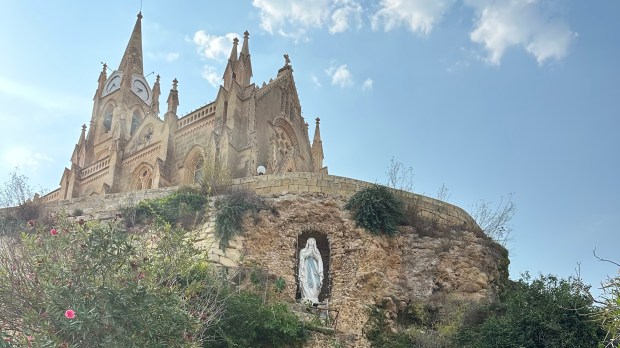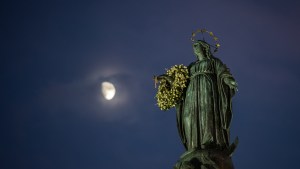In 1858, the little town of Lourdes was graced by extraordinary happenings. On the 11th of February that year, a young girl named Bernadette Soubirous, along with her sister and friend, went to collect bones and wood. Bernadette removed her socks to cross a shallow stream, and when she heard a gust of wind, she looked up towards a grotto. There, she saw a lady dressed in white. The lady wore a white veil, blue sash around her waist, and a yellow gold rose on each foot. Bernadette made the Sign of the Cross and prayed the Holy Rosary with the lady. Then, the lady disappeared.
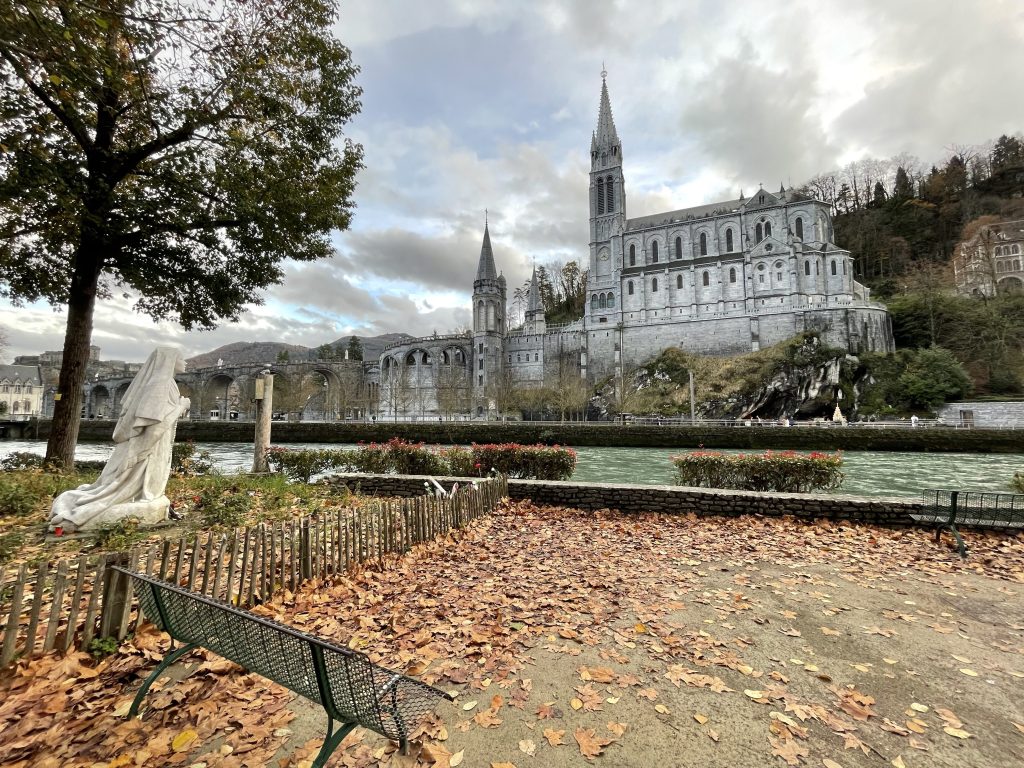
This was the first apparition, and after there were another 17, the last one being on July 16. On March 4, the 15th apparition, with thousands present, the lady returned, and revealed her name: “Que soy era Immaculada Concepciou,” in the Occitan dialect meaning “I am the Immaculate Conception.” Bernadette had no idea what Immaculate Conception meant. Four years earlier, in 1854, Pope Pius IX had declared this an article of faith of the Catholic faith – a dogma.
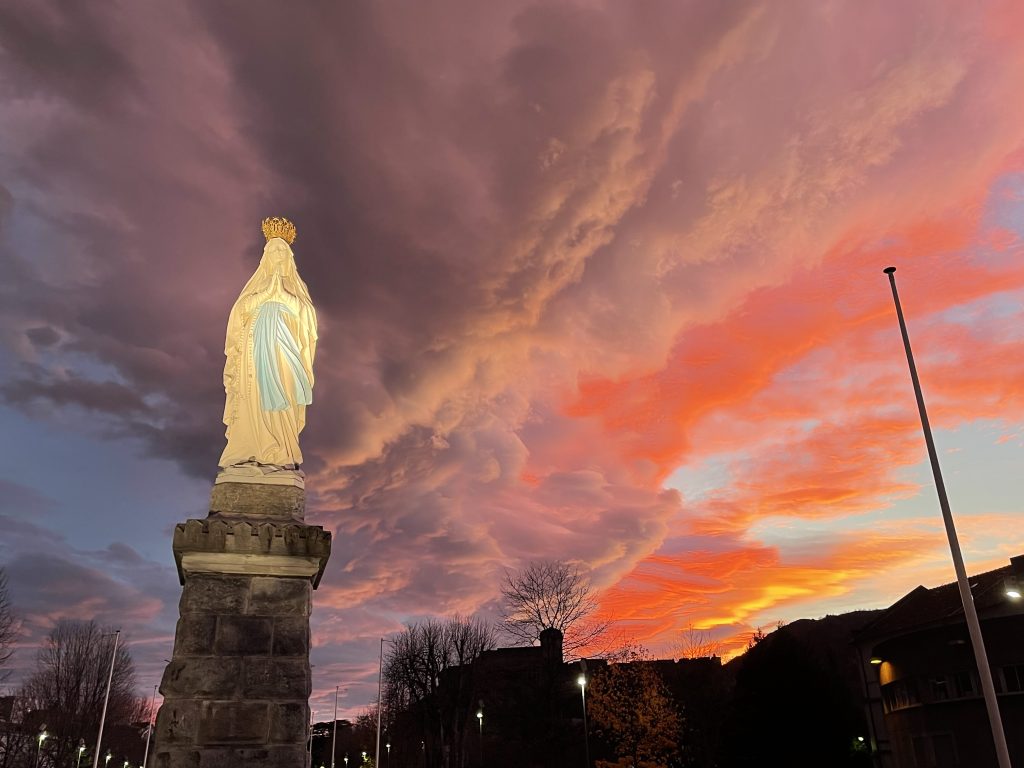
The Immaculate Conception and the Maltese Islands
Although the dogma on the Immaculate Conception of Our Lady was promulgated in 1854, the devotion to the Blessed Virgin Mary under this title originates from early Byzantine times. Indeed, the works of the early Fathers of the Church clearly show that it was widely understood and accepted, as from the beginning of Christianity, that Maryam of Nazareth – the Theotokos — was immaculately conceived. For instance, in his Gospel, St. Luke says that the angel proclaimed, “Hail Mary, full of grace.” Also, in his impassioned statement, St. Ephrem (c. AD 306-373) pronounced the Mother of God as: “Full of grace … all pure, all immaculate, wholly without sin, wholly without stain, wholly without reproach … virgin in soul, in body, in spirit,” and St. Gregory Nazianzus (c. AD 329 – 390) called Mary Prokatharthesia, which means “purified before.”
The devotion of the Maltese to the Immaculate Conception largely predates the dogma. It is most probable that the Maltese embraced the devotion to the Immaculate Conception since those early times. The fact that in Malta, we had a Byzantine presence from c. AD 360 to 870, strongly indicates Malta as one of the first countries where Our Lady was venerated as the Immaculate Conception.
Very old devotions
Centuries-old devotions honouring the Immaculate Conception are still very widespread in the Archipelago. For example, during the 13th and 14th centuries, in the city of Bormla (meaning the Well of God), the Auxilium Christianorum (Mary Help of Christians) and the Madonna tal-Marżabba (Madonna del Soccorso / Our Lady of Rescue) devotions respectively contributed to the increase of Marian devotion among this city’s inhabitants. The church dedicated to the Madonna tal-Marżabba was built before the Great Siege of 1565, on the hill known as the Hill of the Gardens, where today we find the Collegiate Parish Church.
On December 6, 1581, a religious confraternity dedicated to Sanctae Mariae Conceptionis was founded in this church. It became a parish church in 1586. Its titular was Sanctae Mariae Conceptionis del Soccorso.
In 1684, plans to build a new church were made, the present Collegiate Parish. The church was consecrated to the Immaculate Conception (Il-Kunċizzjoni).
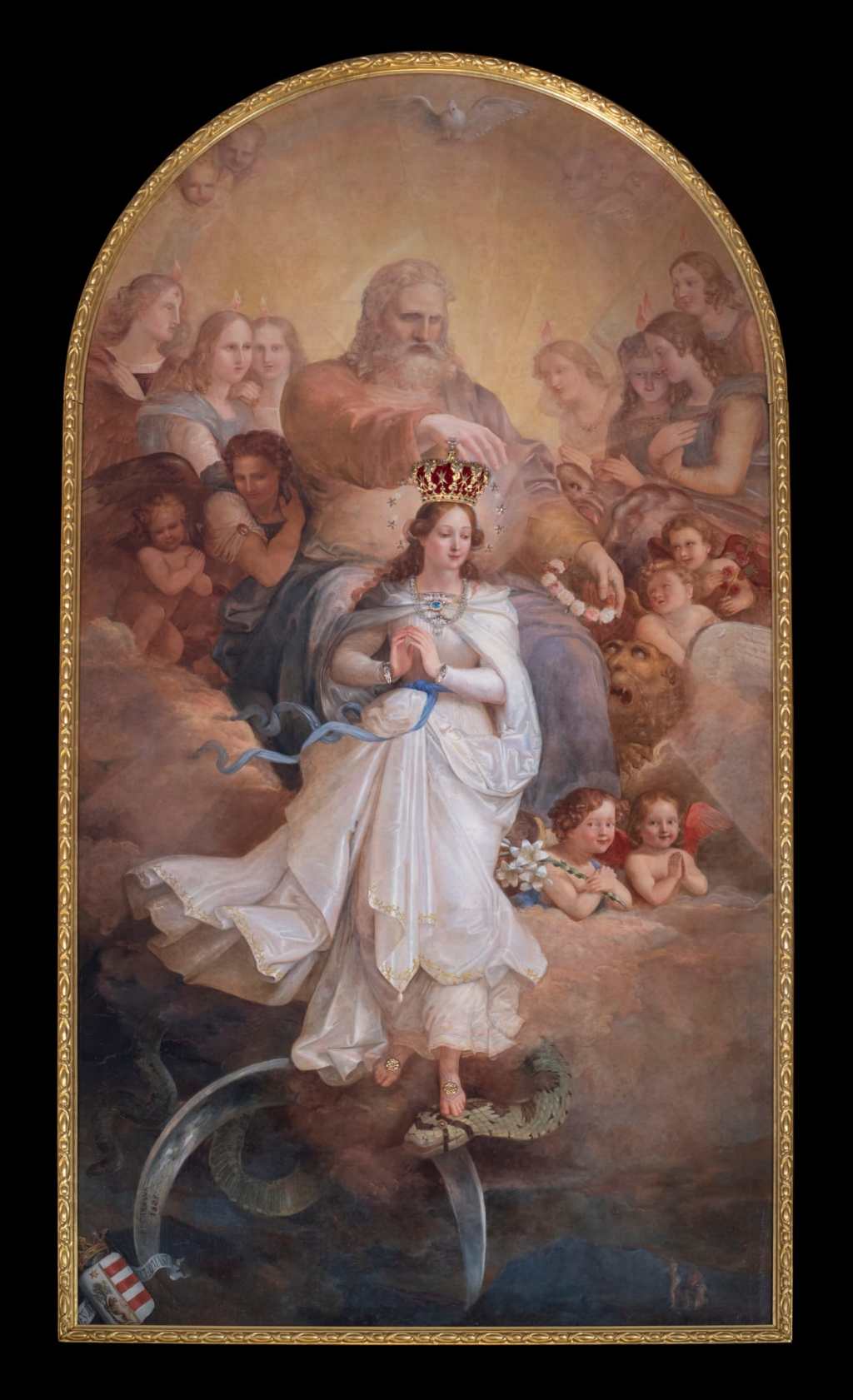
A recent study by Dr. John Vella sheds more light on the antiquity of Marian devotion in Bormla. Vella says that an 8th-9th century Byzantine icon of the Nativity or Theotokos existed in a partially troglodytic church. It depicted the Holy Virgin as the God-bearer. Unfortunately, at some point this icon disappeared and was never traced.
The Lourdes – Gozo Connection
Gozo was one of the first dioceses to welcome the message of the Immaculate Conception of Lourdes, and to spread devotion to the White Lady of the Pyrenees. Anyone visiting Gozo by the Malta-Gozo ferry cannot miss the Neo-Gothic Sanctuary of Our Lady of Lourdes in the village of Għajnsielem, on the hill dominating the port of Imġarr, and her large statue in a naturally hewn grotto on the face of the hill, right under the Sanctuary. For centuries this cave was the home of an effigy of Stella Maris, now in the main square of Għajnsielem.
Tradition has it that Anġlu Grech, a great devotee of Our Lady, had a farm on the same spot where today’s Sanctuary lies. According to this tradition, the Madonna appeared to him while he was watering the cattle in Għajnsielem’s well, where she told him to erect a statue under the title of Loreto in the heart of the village. A church in honour of Our Lady of Loreto was built by 1820, and became a parish church on January 26, 1855. Għajnsielem now has a new parish church built in neo-Gothic style. The foundation stone was laid September 14, 1924.
As soon as the local Bishop of Tarbes, Bertrand-Sévère Laurence, endorsed the veneration of the Blessed Virgin in Lourdes, on January 18, 1862, pilgrimages to the Grotto of Massabielle poured in from all over the world. This was no different for the Islands of Malta. There were Maltese and Gozitans who joined Italian pilgrimages, and others visited the site individually. Among these, we find the bishop of Gozo, Mgr. Pietru Pace, who was so moved by what he saw with his own eyes, that he did everything he could to spread the devotion to Our Lady of Lourdes, which was already quite fervent, thanks to his predecessor Mgr. Antonio Grech Delicata. He also pursued to find the best location for a sanctuary for the Immaculate Conception of Lourdes to capture the hearts of all Gozitans.
It happened that a wealthy Gozitan, who was Mgr. Pace’s fellow pilgrim, had a “eureka” moment when he noticed the precipice overlooking the fields of Kortin, while walking up from Mġarr Harbour. Straightaway, he conveyed his spark of genius to the Bishop, who seized the idea. Pace noticed that the cliff of Kortin was very similar to that of Massabiellie – the cliff also had a grotto. The natural beauty of the place sealed his conviction that this was the site were the sanctuary should be. Kortin makes part of the village Ghajnsielem, so during his first pastoral visit, Pace told the parish priest, Fr. Pietru Pawl Galea, about this idea, and Galea embraced it wholeheartedly. On September 10, 1883, he himself acquired the land for the Sanctuary. He also commissioned, out of his own pocket, the works to open a pathway leading to the chapel. His successors too toiled incessantly for the Sanctuary and the devotion to Our Lady of Lourdes.
It is no exaggeration to say that Bishop Pietru Pace is one of the finest persons to come out of Gozo. He always believed that Mġarr is the Island’s main artery. Therefore, he worked unceasingly for a regular ferry service between Malta and Gozo. He also strived for a new road from the port to Rabat, which is probably one of Gozo’s best infrastructural endeavors. Now, he had only one desire left – erecting a sanctuary of Our Lady of Lourdes on top of Kortin Bluff. He desired that from there, the Immaculate Virgin would safeguard Gozo’s port, the main gate through which all good and evil finds its way to his beloved homeland.
Pope Pius IX issued his decree of approval of the apparitions of Our Lady in Lourdes on February 1, 1876. Just three years later, on March 25, 1979, and nine years before the laying of the first stone of the Gozo sanctuary (June 10, 1888), Bishop Pace ordered that a large statute of Our Lady of Lourdes would be placed in the grotto — this also to attract people towards the site, which would also help in fundraising for the erection of the sanctuary. He solemnly blessed the statute on June 3, 1883, before a huge crowd of pilgrims from all over Gozo.
The Sanctuary of Lourdes
Just a year after Bishop Pietru Pace laid the first stone of the sanctuary, he was appointed Archbishop of Malta. The Gozitans were delighted to see their compatriot advancing so much in his priestly calling, however, the separation broke their heart. Nevertheless, even as Archbishop of Malta he continued to show interest in the Sanctuary of Lourdes, which was completed on May 6, 1893. Construction of the Sanctuary was completed on Fr. Pietru Pawl Galea’s 25th anniversary as parish priest of Għajnsielem. The new bishop of Gozo, Mgr. Fra Giovanni Maria Camilleri, blessed it with great solemnity on August 27 of the same year. The chapel was designed by the architect Chev. Manweli Galizia in neo-Gothic style, like the Basilica of the Immaculate Conception in Lourdes, the oldest of all the Basilicas!
In recognition of the work on the Lourdes chapel, Pope Leo XIII gave him the title of Knight of Saint Gregory the Great. The first feast day of Our Lady of Lourdes in the Sanctuary was celebrated on July 15, 1894.
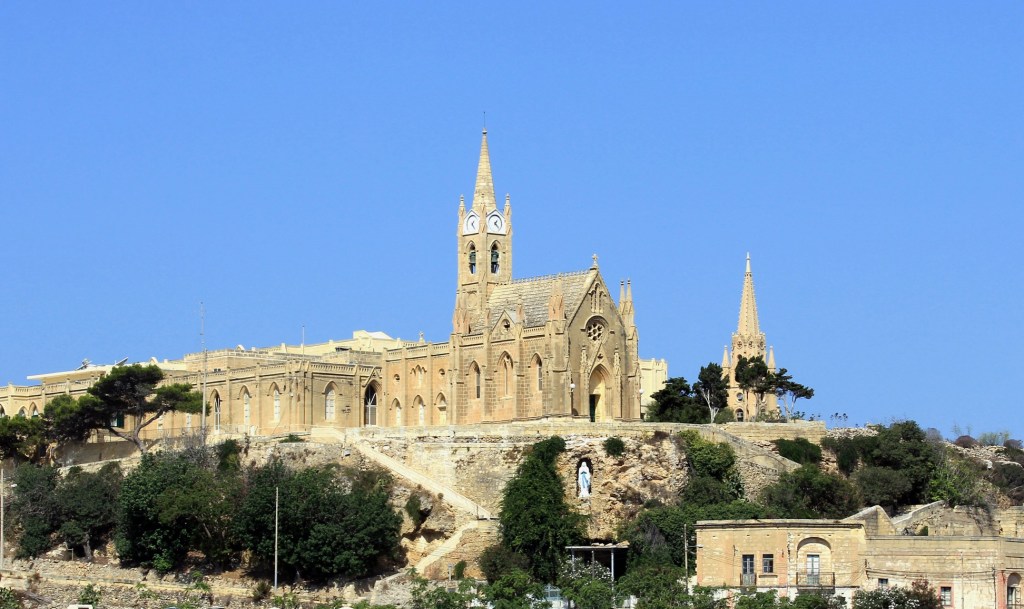
In 1924 Fr. Joseph Galea Rapa was appointed rector of the Sanctuary and remained so until he passed in 1976. The works carried out under his watch are a wonderful testimony to his zeal and devotion. He commissioned marvelous interior and exterior embellishment and infrastructural projects. But the pinnacle of his work was the strengthening of the devotions, functions, and celebrations of the Sanctuary, particularly on the anniversaries of the Apparitions of Our Lady of Lourdes. Apart from celebrations related to the Apparitions, he also introduced the feast of Saint Bernadette, and on February 6, 1931, he established the devotion to the Miraculous Medal. In August 1933, when Bernadette Soubirous was raised to the altars, the Maltese living in Rome donated an effigy of the saint to the Sanctuary.
After the appeal of the Pope, in 1958, the whole world celebrated the centennial festivities of the Apparitions in spiritual union with the City of Our Lady. The sanctuary of Għajnsielem was no different. Indeed, Fr. Joseph went to all lengths to prepare a full program of feasts throughout this whole Marian year. It was a great success; the Immaculate Conception surely had something to do with it!
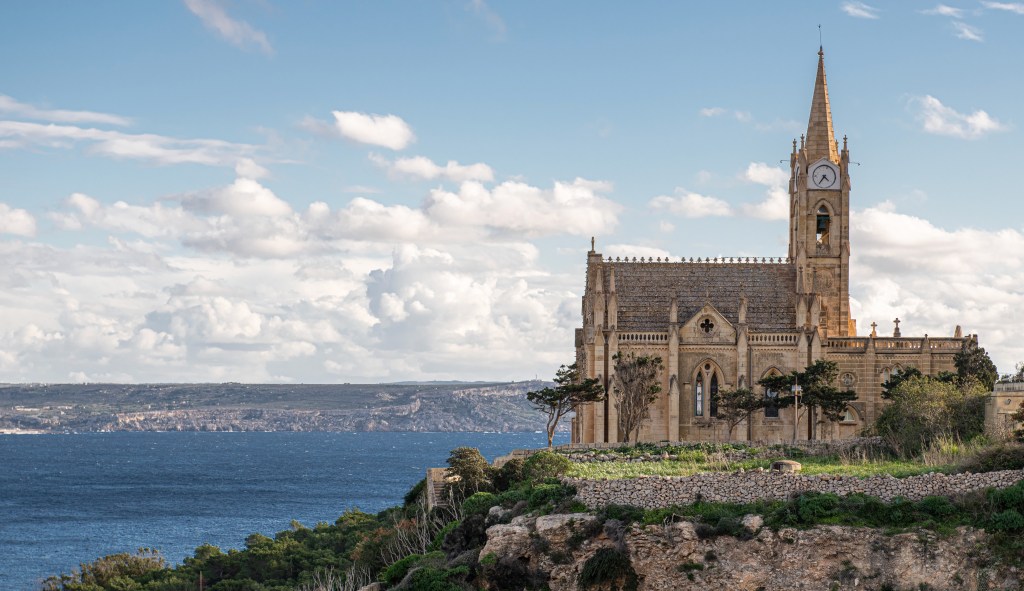
The Pilgrimages
If the cliff and grotto of Kortin were like that of Massabielle, the completion of the Sanctuary gave the Gozitans and other pilgrims a “Little Lourdes.” However, the church had no statue. But Archbishop Pace was quite a problem-solver. After a visit he had from Madam Karolina Mamo Bruno, she offered to cover all the expenses for the effigy.
On September 17, 1893, the Gozitans invaded the harbor of Mgarr, and at around four in the afternoon the bells of the parish of Ghajnsielem pealed as the ship Gleneagles appeared. The Holy Rosary was recited, and gentle hymns were sung to the Virgin Mary. The bow of the vessel opened. And there was the beautiful statue of Our Lady of Lourdes, made by the well-known Maltese statuary Karlu Darmanin. As the ship entered the port, the people burst out in tears and clapping, shouting: “Long live Our Lady of Lourdes!” The ship’s whistle and foghorn were at full blast.
That was the first Maltese pilgrimage, organized and led by Archbishop Pace himself, to bring the Queen of Heaven and Earth to her abode. The statue was lowered from the bow, and after a short while, the procession began, initiated by 18 girls dressed in white with a blue sash around their waist. Archbishop Pace walked behind the Heavenly Mother, followed by the pilgrims praying the Rosary, led by 24 altar boys. It was an enchanting spectacle; the only audible sound came from pilgrims’ lips reciting the Rosary. Once the pilgrimage arrived under the grotto, Master Caruana of the Dominicans gave a speech that set hearts on fire. Then the pilgrimage followed a banner made of the finest silk, and climbed towards the Sanctuary where the statue of the Madonna was placed, the one we still venerate to this day.
After this first pilgimage, Bishop Pace led three others, and numerous other pilgimages came from all over Malta, apart from the huge pilgrimages to visit Our Lady of Pinu, which mostly passed through the Sanctuary of Lourdes.
On November 22, 1899, the Franciscan Friars Minor arrived in Gozo and the Parish of Għajnsielem was the choice for their convent. It is a known fact that the Franciscans have always been intrinsically close to the Immaculate Conception. Actually, once in Għajnsielem, they immediately organized pilgrimages, as they still do. A certain Father Bernardo also strived unceasingly to find benefactors to establish devotions to the Apparition.
Final thought
If the vision of Our Lady of Lourdes proclaiming herself as the Immaculate Conception to a poor, frail child of the working classes captured the minds and hearts all over a semi-deChristianized France, Europe, and of the entire world, imagine what great spiritual effects it has caused among the Catholic community of our Islands, which from the earliest Apostolic Era, distinguished themselves as devout votaries of the Blessed Virgin Mary. At long last, the Immaculate Conception that they had revered for centuries, proclaimed herself so, to seal the Papal Dogma which was declared a few years before.
References
Borg V. Marian Devotions in the Islands of St. Paul. The Historical Society. Malta. 1983
Gambero L. “Mary and the Fathers of the Church”. Translated by Thomas Buffer. Ignatius Press. 1999
Lienhard C. ‘I am the Immaculate Conception’. The Arlington Catholic Herald. 23rd November 2020
Muscat G. Zvilipp Tal-Qima Lejn Marija Vergni Immakulata F’Bormla (Development of the Devotion to the Immaculate Virgin Mary in Bormla). Malta. 1949
Vella Apap N. Gheluq il-mitt sena (1893 – 1993) mit-tberik tal-knisja-santwarju tal-Madonna Ta’ Lourdes, f’Ghajnsielem, Ghawdex. Gozo. 1993
Vella J. The Rock-cut Church of Bormla: Origins and Developments. Journal of Maltese History, volume 5 number 1, 2016
Xerri A. Id-devozzjoni tal-Għawdxin lejn Sidtna Marija ta’ Lourdes [The Gozitans’ devotion to Our lady of Lourdes], Gozo 1958 and Buttigieg J.L. Programme tal-festa Għajnsielem tal-Banda ta’ San Ġużepp, 2008 [from Kappelli Maltin Il-knisja tal-Madonna ta’ Lourdes – Għajnsielem Għawdex]
